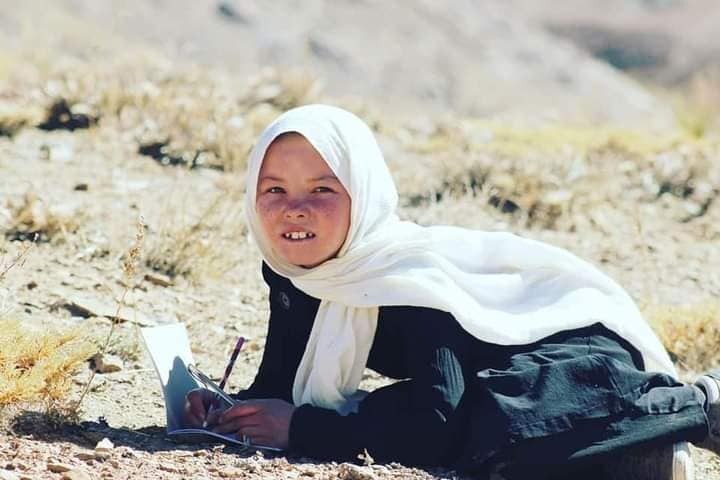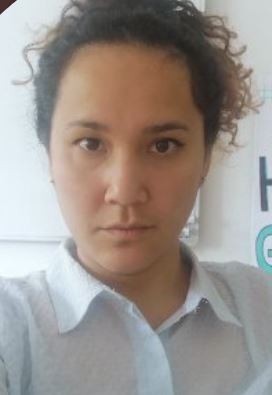Photographer: Hekmatullah Basseri
After closing female businesses and women-led organizations, the Taliban recently banned women from leaving their homes unless necessary, always accompanied by a male chaperon. They are banned from viewing public sports, or walking in public parks. After sending girls back home from schools, and forbidding women to get an education, the Taliban has ensured their point comes across with two attacks on the Kaaj Institute, located in a predominantly Hazara locale. The recent attack at the end of September on the institute resulted in the death of 54 young women, 51 of those being Hazara, and badly injuring hundreds more (Kattar, 2022). The young women were sitting for a mock exam, being so close to giving their final exams.
These young students would have followed the constant wave of Hazara women passing Afghanistan’s most difficult educational exam, the Konkor, that allows them to continue their educations in the Universities of Afghanistan. For more than 120 years, ethnic Hazaras have had to face not just the regular forms of discrimination in society that is often present in case studies of Genocide, such as the dehumanization of ethnic features, propaganda regarding historical background, extra barriers, duality of racist laws, but also had to risk killings and suicide attacks anywhere from the moment they are born in maternity wards, to schools, market places, sports centers, places of worship, on the streets, and in wedding celebrations. A text book case of Genocide, the ethnic Hazaras are targeted with the aim of wiping the population out. However, the International community is yet to officially recognize it as such.
In applying the lenses of intersectionality, the young women of ethnic Hazaras are at the lowest of this hierarchy of power, and simultaneously at the top. They are discriminated against on the basis of their ethnicity, gender, as well as their religious affiliations (Hazaras are predominantly Shia, while the Taliban subscribe to extremist forms of Sunni Islam, such as Wahabism and Salafism). However, in the past 20 years of relative stability, Hazara young women have proven to be the bringers of change, a wave of modernity that were going to carry the weight of Afghanistan, to move them to the current century. They have continuously been striving to be more politically active than ever before, and working in administration and legislative offices, in the police force and other governmental posts. They have also been dominating the Konkor examinations, and they have been proud of it.
SOME STRIDES THE WOMEN OF AFGHANISTAN HAD MADE
While women in Afghanistan are particularly vulnerable, and the poverty of a woman in Afghanistan is of a worser kind than the poverty of men in Afghanistan due to fewer possibilities of changing their situations, some Developmental strides had been made in Afghanistan prior to 2021. According to the National Action Plan for the Women of Afghanistan (NAPWA), Article 22, the policy of non-discrimination and equality in rights and duties between women and men was implemented, resulting in unprecedented levels of political involvement of women, making up 40% of the registrants for the presidential election and filling 27% of the seats in the National Assembly (Aids Data Hub, 2007). The World Bank published a report where by 2013-2014, only 20.3 percent of Afghan women above the age of 15 are literate (El Horr, 2017). The adult literacy rate has been estimated at 36%, while for adult women, it is estimated at being 21%, a growing trend between 2007-2017 (Aids Data Hub, 2007).
With the return of the Taliban’s control over Afghanistan in August 2021, Afghanistan was thrown back into the Dark Ages, with career and educated men and women fleeing for their lives, causing not just a Brain Drain, but also the complete reversal of all the Developmental and Educational strides the women of Afghanistan had made. Infrastructural breakdown caused an overwhelming majority of the population to face starvation and unemployment. After the huge blow of the Kaaj Institute suicide bombing, some Hazaras, survivors of the attack, went back to give the exams and received high grades. However, for the first time in years, the top 10 seats in the university entrance has no female students. In 2021, the results showed that two of the top students were young women. In 2020, again, two of the top ten were women. In 2019, there was one young woman, while in 2018, three of the top ten students were young women (Ministry of Education, Afghanistan).
THE INTERSECTIONALITY OF ‘STUDENT’, ‘HAZARA’ AND ‘WOMAN’
Not only is the Taliban making a stance on stopping Hazaras getting the education they deserve, but they are also making sure that women do not top Universities. After all, they believe women should also not be sitting as Judges in the country since their brains are lesser than those of men (Vice News, 2022). Since the results in the university entrance exams defy their perspectives and gender biases, they are forced to remove women from the top ten positions themselves. Either that, or the constant persecution, and terrorizing women is showing results the Taliban wanted to see. In fact, the Taliban’s higher education ministry spokesperson, Mawlawi Ahmed Taqi admitted to having expelled female Hazara students from Universities last month, many of the female Hazara students had been out to protest the Kaaj Institute killing of Hazara women students (Afghanistan International, 2022).
This has shown how much the Taliban fear the young woman of Afghanistan. The success of a young Hazara woman effects the regime of the Taliban in the same way that the light-bearers of knowledge brings to the authority of ignorance.
CITATIONS:
- Afghanistan International. (2022, October 14). Taliban Confirms Mass Expulsion of Hazara Female Students. Afghanistan International. Retrieved November 10, 2022.
https://www.afintl.com/en/202210144830. - Aids Data Hub. (2007). (rep.). National Action Plan for the Women of Afghanistan (2007-2017). Retrieved November 10, 2022. https://www.aidsdatahub.org/sites/default/files/resource/national-action-plan-women-afghanistan-2007-2017.pdf.
- El-Horr, J. (2017). (rep.). WOMEN AND THE ECONOMY: Lessons Learned on Operational Approaches to Women’s Economical Empowerment in Afghanistan. World Bank Group. Retrieved November 10, 2022. https://documents1.worldbank.org/curated/en/600601535381900719/pdf/Lessons-Learned-on-Operational-Approaches-to-Womens-Economic-Empowerment-in-Afghanistan.pdf.
- Kattar, Pierre. (2022). ‘I was their teacher’: A chance encounter as Afghans protest after a suicide bombing. NPR.org. Retrieved November 1, 2022. https://www.npr.org/sections/goatsandsoda/2022/11/01/1132805337/i-was-their-teacher-a-chance-encounter-as-afghans-protest-after-a-suicide-bombin
- Vice News. (2022). Life in the Taliban’s Afghanistan. United States. Retrieved November 10, 2022.
https://www.youtube.com/watch?v=iIFi_Rgm-T8&ab_channel=VICENews.

